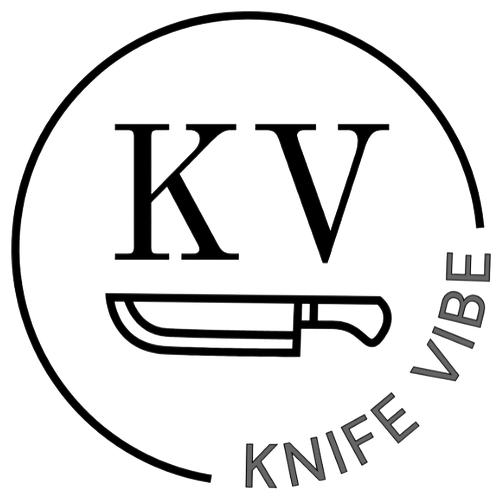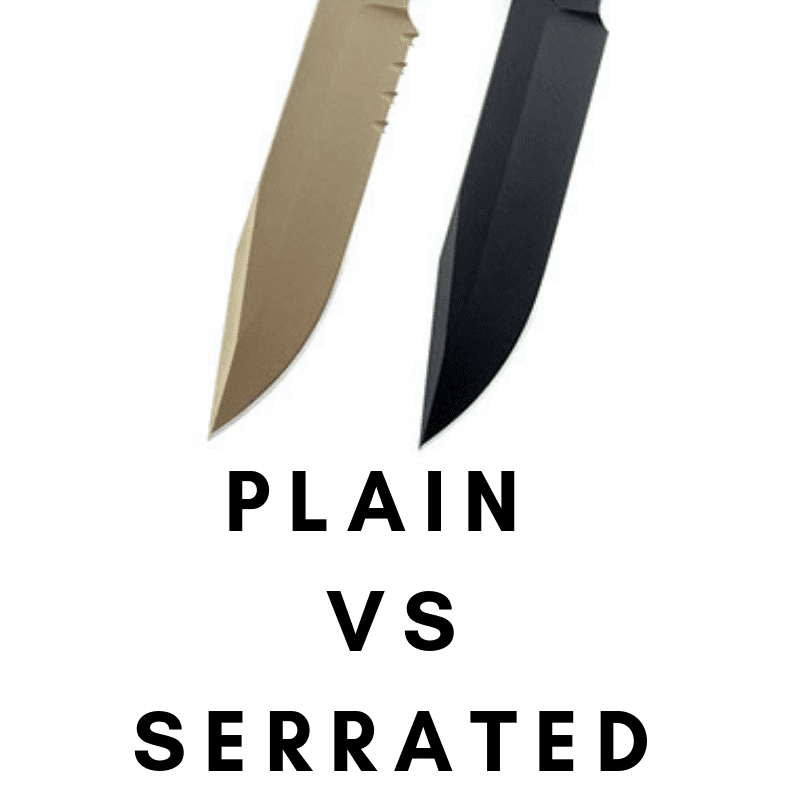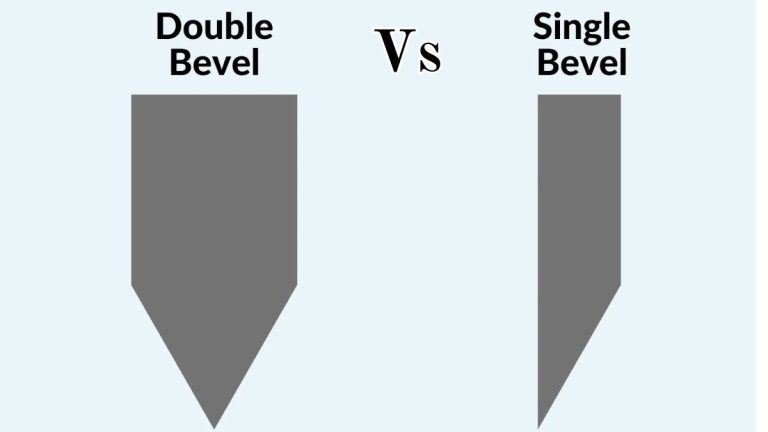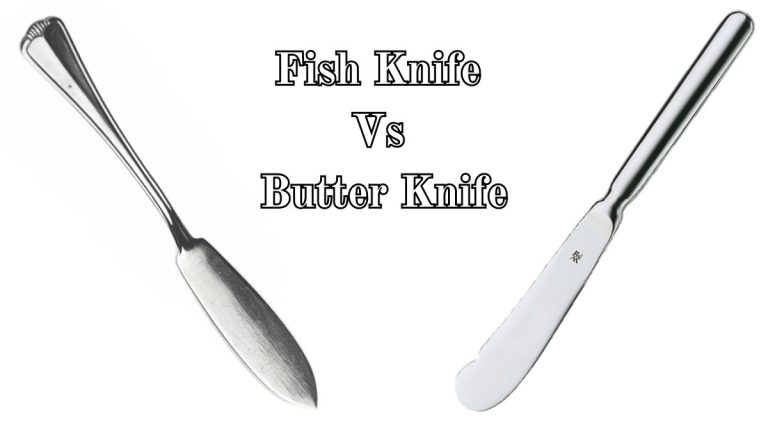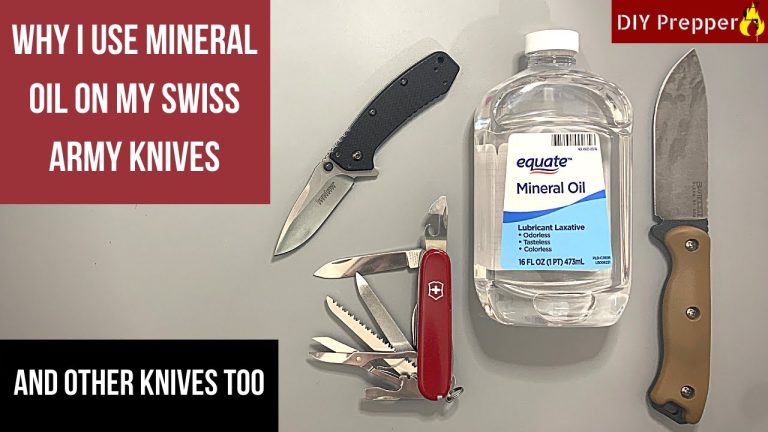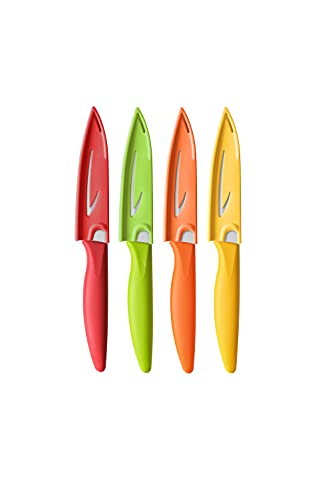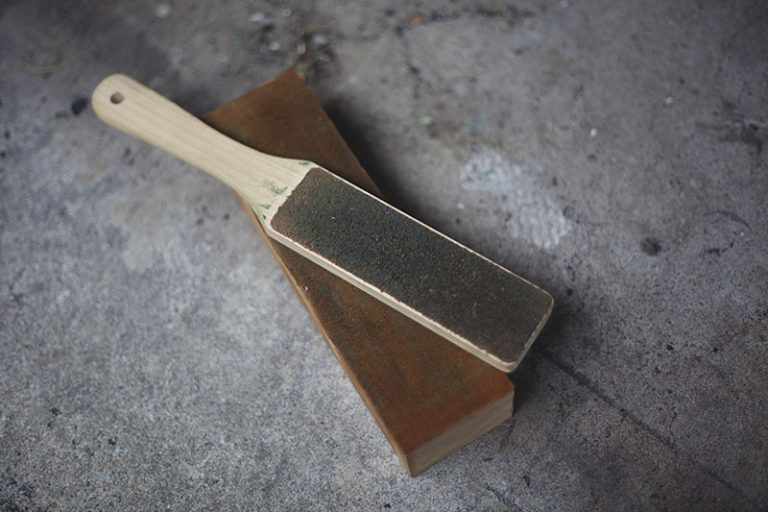Serrated Knife Vs Plain Edge: Which Is Best for Your Kitchen?
Serrated knives and plain edge knives both have unique strengths. Each type serves different purposes in the kitchen.
Choosing the right knife can make cooking easier and more enjoyable. Serrated knives are known for their saw-like teeth, making them great for slicing through tough surfaces. Plain edge knives, on the other hand, offer smooth, clean cuts ideal for precision tasks.
Understanding the differences helps you select the best tool for your needs. This comparison will guide you through the key features, advantages, and uses of both serrated and plain edge knives, helping you make an informed decision for your kitchen.

Credit: www.facebook.com
Introduction To Kitchen Knives
Kitchen knives are essential tools for any cook. They help in preparing ingredients quickly and efficiently. Choosing the right knife can make your cooking experience more enjoyable and productive.
Importance Of Choosing The Right Knife
Using the correct knife for the task at hand is crucial. A well-chosen knife ensures safety and precision. It also makes cutting and slicing easier, saving time and effort.
The right knife can improve the quality of your dishes. It allows you to achieve the perfect cut, enhancing the overall presentation and taste. A good knife also minimizes food waste by reducing uneven cuts.
Common Types Of Kitchen Knives
There are various types of kitchen knives, each designed for specific tasks. Here are some of the most common types:
- Chef’s Knife: A versatile knife used for chopping, slicing, and dicing.
- Paring Knife: A small knife ideal for peeling and intricate work.
- Bread Knife: A serrated knife perfect for slicing bread without crushing it.
- Utility Knife: A medium-sized knife for general-purpose cutting.
- Boning Knife: A knife with a narrow blade for deboning meat and fish.
Each of these knives has its unique features and benefits. Understanding their uses helps in choosing the right one for your kitchen.
Serrated Knife Features
Understanding the features of a serrated knife can help you make an informed decision. These knives are known for their distinct blade design and unique advantages. Let’s dive into what makes them special.
Blade Design
The serrated knife has a unique blade design. The blade has small, jagged teeth, which look like a saw. These teeth make cutting through tough surfaces easier.
Serrated blades are typically made from stainless steel. This ensures they stay sharp for a long time. The design helps in maintaining the knife’s edge.
Common Uses
Serrated knives are versatile. They are commonly used for cutting bread and pastries. The teeth allow for clean slices without crushing the soft interior.
They are also ideal for slicing tomatoes and other soft fruits. The knife can cut through the skin without squashing the fruit. Additionally, they are useful for cutting meat with a tough exterior and soft interior, like roasts.
Advantages
| Advantage | Description |
|---|---|
| Efficient Cutting | The serrated edge cuts through tough surfaces easily. |
| Low Maintenance | Serrated knives stay sharp longer than plain edge knives. |
| Versatility | They are suitable for a variety of foods. |
In summary, the serrated knife stands out for its unique features. Its blade design, common uses, and advantages make it a valuable addition to any kitchen.
Plain Edge Knife Features
Plain edge knives are popular for their versatility and precision. They offer a clean, straight edge that excels in various tasks. Let’s delve into the features of plain edge knives.
Blade Design
Plain edge knives feature a smooth, continuous blade. This design allows for precise control and clean cuts. The blade’s sharp edge is ideal for slicing and chopping. It requires regular sharpening to maintain its effectiveness.
Common Uses
Plain edge knives are perfect for everyday kitchen tasks. They excel at slicing vegetables, fruits, and boneless meats. Chefs often prefer them for their precision and ease of use. These knives are also useful in outdoor activities, such as camping and fishing.
Advantages
Plain edge knives offer several advantages. They provide clean, straight cuts without tearing. Their smooth edge makes sharpening easier. They are versatile and suitable for a wide range of tasks. This makes them a staple in many kitchens.

Credit: www.youtube.com
Performance Comparison
Choosing between a serrated knife and a plain edge knife can be challenging. The performance of each varies with different tasks. Here, we will compare how each performs in cutting bread, slicing meat, and chopping vegetables.
Cutting Bread
Serrated knives excel at cutting bread. The sharp, jagged edges grip the crust, slicing through without crushing the soft interior. This ensures you get clean slices every time.
On the other hand, a plain edge knife struggles with bread. The smooth blade tends to squash the loaf, making it difficult to get even slices.
Slicing Meat
For slicing meat, a plain edge knife is usually the better choice. The sharp, smooth blade cuts through meat with precision. This is important for delicate tasks such as preparing sashimi or carving a roast.
A serrated knife is less ideal for slicing meat. The saw-like teeth can tear the fibers, resulting in uneven cuts and a less appealing presentation.
Chopping Vegetables
Chopping vegetables requires a sharp, precise blade. A plain edge knife is perfect for this. The smooth, sharp edge allows for controlled, clean cuts, which is crucial for tasks like dicing onions or julienning carrots.
While a serrated knife can cut vegetables, it is not the best tool for the job. The teeth might snag on the vegetables, leading to irregular cuts and more effort.
| Task | Serrated Knife | Plain Edge Knife |
|---|---|---|
| Cutting Bread | Excellent | Poor |
| Slicing Meat | Poor | Excellent |
| Chopping Vegetables | Fair | Excellent |
Maintenance And Sharpening
Maintaining and sharpening your knives is crucial for their performance and longevity. Both serrated and plain edge knives require different care techniques. This section will guide you on how to properly maintain and sharpen each type. By following these tips, you can ensure your knives stay in top condition.
Serrated Knife Care
Serrated knives need special attention. These knives have teeth-like edges. This design makes them tricky to sharpen. It’s best to use a sharpening rod. Choose one that matches the size of the serrations. Gently work the rod into each serration. Do this carefully to avoid damaging the teeth. Maintain the angle to keep the knife’s edge sharp. Regular honing also helps. It keeps the serrations aligned.
Plain Edge Knife Care
Plain edge knives are easier to sharpen. You can use a whetstone or a sharpening system. Start by wetting the stone. Hold the knife at a 20-degree angle. Slide the blade across the stone. Do this evenly on both sides. Repeat until the edge is sharp. Regular honing with a steel rod keeps the edge straight. This prevents dullness. Clean your knife after each use. This prevents rust and keeps it sharp.
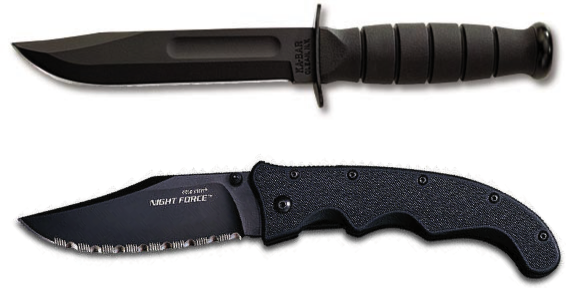
Credit: blog.knife-depot.com
Safety Considerations
Understanding the safety considerations of serrated and plain edge knives is crucial. Both types have unique handling requirements. Knowing these can prevent accidents and ensure safe use. Below, we explore the safety aspects of each knife type.
Handling Serrated Knives
Serrated knives have a unique edge with saw-like teeth. This design makes them ideal for cutting through tough surfaces. But it also poses safety challenges.
Key Safety Tips:
- Use a firm grip: Hold the handle securely to avoid slips.
- Cut slowly: The teeth can catch on surfaces, so use slow, controlled motions.
- Store safely: Keep them in a knife block or sheath to protect the blade and prevent accidents.
Always keep fingers away from the blade. The teeth can cause serious cuts.
Handling Plain Edge Knives
Plain edge knives have a smooth, straight edge. They are versatile and easier to handle for most tasks. But they still require careful use.
Key Safety Tips:
- Use a cutting board: This provides a stable surface and protects countertops.
- Keep the blade sharp: A dull knife can slip and cause injuries.
- Cut away from your body: Always direct the blade away to avoid accidents.
Store plain edge knives properly. A knife block or magnetic strip works well.
Always pay attention while using these knives. Distraction can lead to accidents.
Cost And Availability
Choosing between a serrated knife and a plain edge knife can be difficult. One important factor to consider is the cost and availability of these knives. This section will explore the price range and where to buy each type.
Price Range
Serrated knives often cost more due to their complex design. The price can range from $10 to $100. High-end models may cost even more. Plain edge knives are usually cheaper. They can start as low as $5. Most quality plain edge knives fall between $15 and $50.
Where To Buy
Both types of knives are widely available. You can find them in local kitchen stores. Major retailers like Walmart and Target also carry them. Online stores like Amazon offer a huge selection. Specialized kitchenware websites often have unique options. Local markets sometimes have handmade knives.
Choosing The Best Knife For Your Needs
Choosing the best knife for your needs can be challenging. Serrated knives and plain edge knives both have their pros and cons. Your choice depends on your cooking style, quality preferences, and budget.
Assessing Your Cooking Style
Think about the type of food you prepare most often. Do you cut a lot of bread, tomatoes, or citrus fruits? A serrated knife might be best. It easily slices through tough exteriors without crushing the soft insides. If you prefer chopping vegetables, dicing onions, or slicing meat, a plain edge knife could be a better fit. Its smooth blade provides clean, precise cuts.
Balancing Quality And Budget
Consider the frequency of your knife use. A high-quality knife may cost more but last longer. For everyday cooking, investing in a durable knife is wise. Stainless steel blades offer durability and rust resistance. High-carbon steel blades stay sharper but require more care. If your budget is tight, opt for a good mid-range knife. Many brands offer quality knives at reasonable prices. Remember, a well-maintained knife can serve you for years.
Frequently Asked Questions
What Are Serrated Knives Best For?
Serrated knives are ideal for cutting through tough or crusty surfaces. They work well on bread, tomatoes, and certain meats.
When Should I Use A Plain Edge Knife?
Use a plain edge knife for precise cuts and slicing tasks. It’s great for fruits, vegetables, and boneless meats.
Can A Serrated Knife Be Sharpened?
Yes, a serrated knife can be sharpened with a special serrated knife sharpener. It’s important to maintain its unique edge.
Which Knife Is Better For Meat?
For boneless meat, a plain edge knife is better. For meats with a crust or tougher exterior, use a serrated knife.
Conclusion
Choosing between a serrated knife and a plain edge depends on your needs. Serrated knives excel at cutting tough surfaces like bread. Plain edge knives provide clean cuts on softer items like vegetables. Both types serve different purposes in the kitchen.
Consider your cooking habits and tasks before deciding. Each knife has unique benefits that can enhance your culinary experience. A well-equipped kitchen often has both types. This ensures you are ready for any cooking challenge. Happy cooking with your chosen knife!
